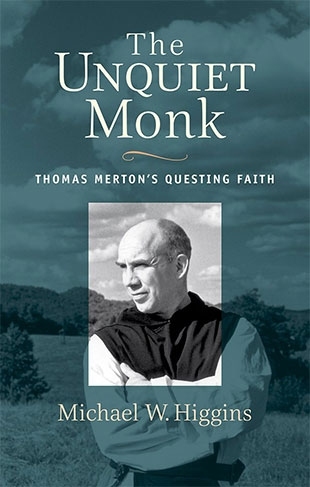The Unquiet Monk doubles as a thorough and riveting introduction to Thomas Merton's life and as an enriching refresher for those who have already dived deep into the journals, essays, books, and letters of this contemplative and prophetic Trappist monk. Higgins, a distinguished scholar, author, and documentarian, brings to this book not only his keen mind but also a robust soul and heart, so that a certain unmistakable essence of Merton shines through. Rather than being told about Merton, we as readers become part of Merton's quest to find the point where the divine and the human uniquely and inviolably intersect.
The book opens with a biography that uses the metaphor of Merton as a "perpetual pilgrim" of the mind, imagination, and spirit. Then Higgins introduces four facets of Merton's character: writer, solitary critic, religious figure, and pilgrim to the East. As a writer, Merton's journey takes him, in his own words, into the "belly of a paradox": He shares with luminous honesty self-disclosures while living in a cloister with a vow of silence. As a solitary critic, "Merton knew that he was a contemporary of Auschwitz, Hiroshima, Vietnam and the Watts riots, and although he was not consulted about them, he was deeply and personally implicated" — and needed to speak out. As the foremost religious figure of the mid-20th century, he was determined to reclaim contemplation for ordinary people and to further dialogue between faiths. As a pilgrim to the East, especially in his later life and travels, Merton's consciousness evolved and matured, and his voice became even more universal than it had been before.
Higgins does not shy away from the apparent contradictions and controversies that arose for this monk who felt passionately connected to the world and its problems. He describes the difficulties Merton encountered as his superiors suppressed his increasingly pacifist ideas, and he rounds out the picture of Merton's humanity with a sensitive recounting of his intimate relationship with M, a nurse he met while in the hospital for back surgery.
Higgins concludes with a short, meaningful chapter on Merton as "an icon of wholeness" who showed that "an encompassing unity awaits all who yearn to know the Holy." One comes away from this immersion in Merton's life with quiet refreshment yet an unquiet desire to dig even more deeply into what Merton described as "a liberty that nobody can touch, that nobody can affect, that no political change of circumstances can do anything to."
